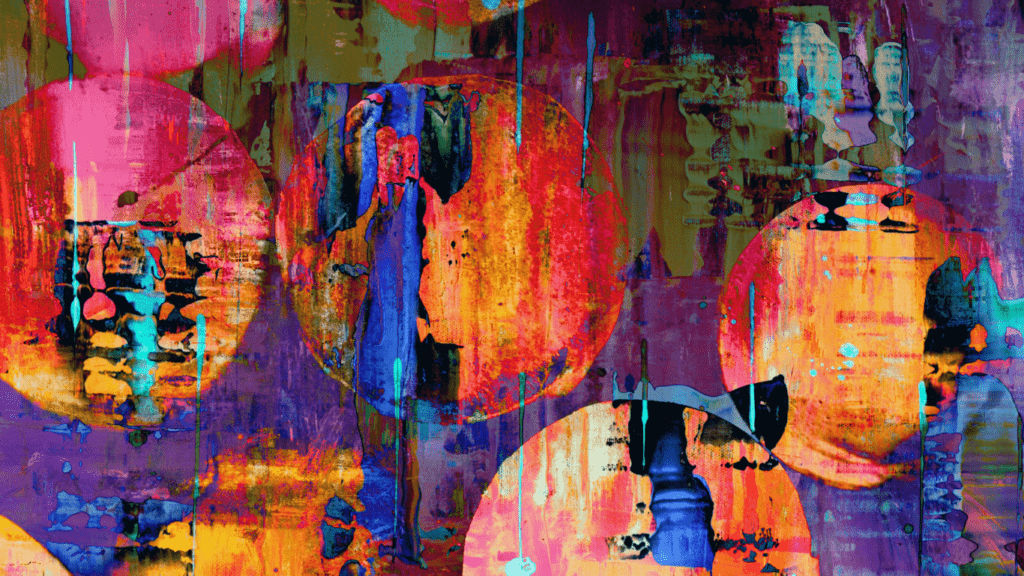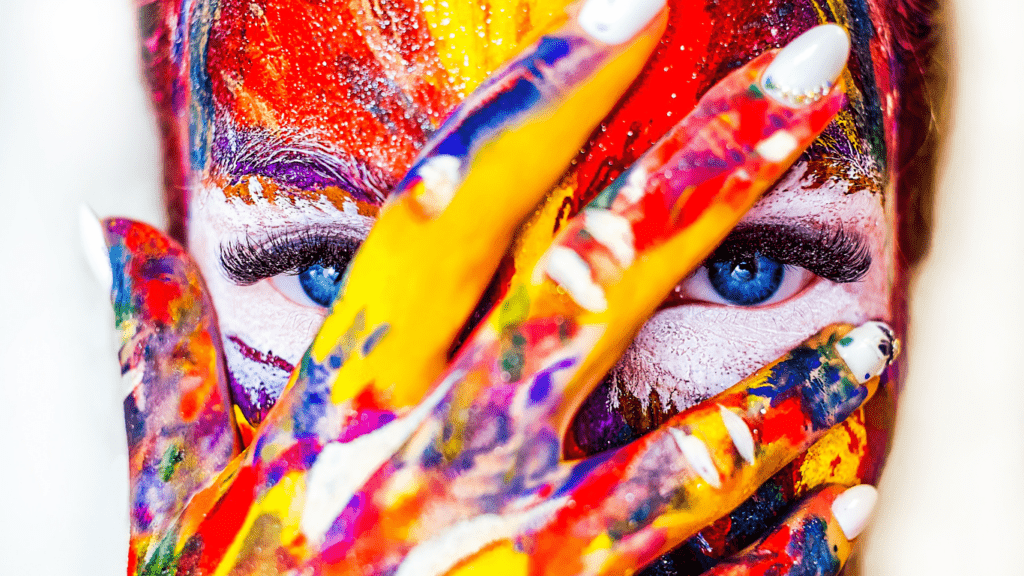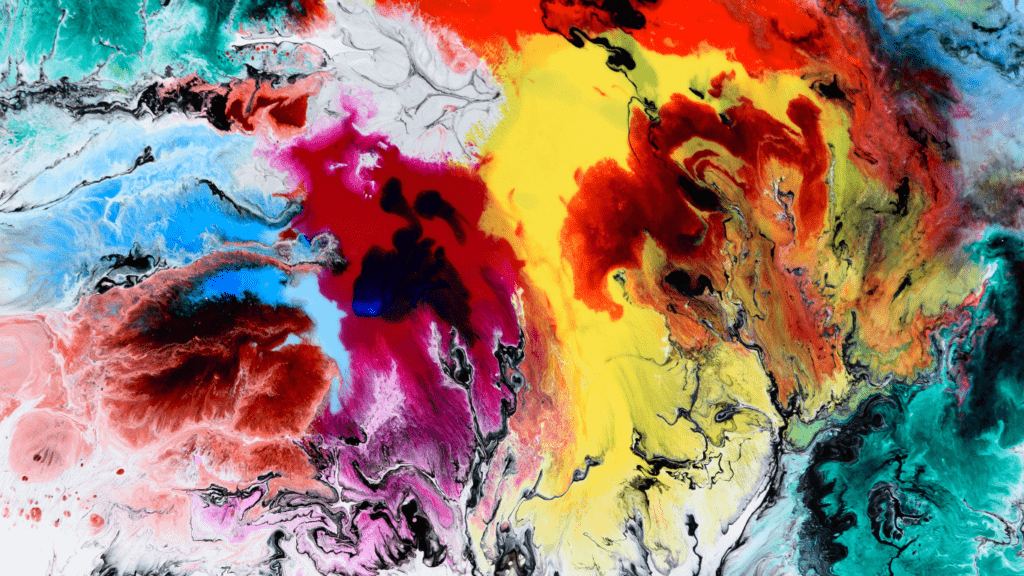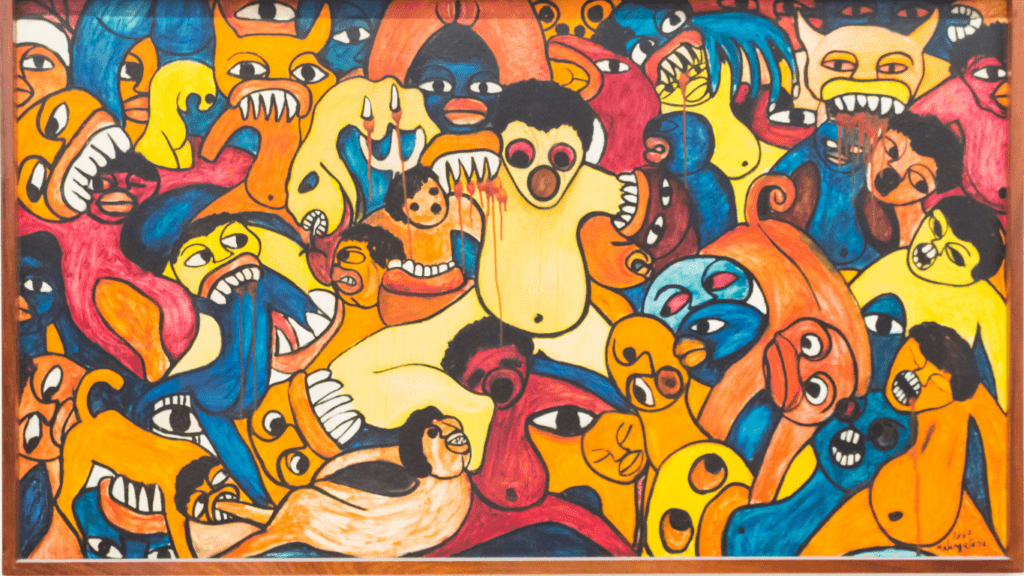The Birth of Abstract Expressionism
The dawn of Abstract Expressionism emerged in the post-World War II era. As artists sought new means of expression, they turned away from traditional forms and embraced spontaneity and emotional intensity. This movement blossomed primarily in the 1940s and 1950s in New York City, marking a shift in the art world’s epicenter from Europe to America.
Prominent artists like :
- Jackson Pollock,
- Mark Rothko
- Willem de Kooning
led the charge. They prioritized creative freedom, often using unconventional techniques and mediums. Jackson Pollock’s drip paintings, for example, revolutionized the concept of how paint could be applied to a canvas.
Two major forms dominated Abstract Expressionism: Action Painting and Color Field Painting. Action Painting, exemplified by Pollock and de Kooning, focused on the physical act of painting as an essential part of the finished work. The energy and movement involved often conveyed raw emotional force.
In contrast, Color Field Painting, championed by Rothko and Barnett Newman, emphasized large areas of a single color to evoke a contemplative response. The simplicity and depth of these pieces often encouraged viewers to immerse themselves in the emotional atmosphere created by the interplay of colors.
Authorities like the Museum of Modern Art (MoMA) in New York and Art Institute of Chicago embraced these artists, helping to cement Abstract Expressionism’s importance. These institutions not only showcased the radical works but also catapulted the artists to international fame.
Abstract Expressionism wasn’t just an art movement; it became a symbol of broader cultural shifts. America, having emerged as a post-war superpower, now asserted its cultural dominance through this innovative and influential art form.
Selection Criteria for Top Paintings
Choosing the top Abstract Expressionist paintings involves evaluating several critical factors. The following criteria ensure each painting’s significance within the movement.
Artistic Techniques
Artistic techniques play a vital role in identifying top Abstract Expressionist paintings. These techniques include the use of gestural brush strokes (e.g., Jackson Pollock’s drip paintings) and large fields of color (e.g., Mark Rothko’s color fields). The level of innovation each artist shows in their approach to composition, texture, and color is fundamental.
Historical Significance
Historical significance determines a painting’s impact within the Abstract Expressionism movement. Paintings that mark pivotal moments or exhibit a decisive shift in an artist’s career are prioritized. For example, Pollock’s “Number 1, 1950 (Lavender Mist)” marked a significant evolution in his drip technique.
Critical Reception
Critical reception helps assess a painting’s importance through the lens of art historians, critics, and institutions. Paintings that have received extensive acclaim or have been prominently displayed in major art museums (e.g., the Museum of Modern Art) indicate their lasting influence and recognition. The sustained relevance and academic analysis of a painting further solidify its top status.
Top 10 Abstract Expressionist Paintings

Abstract Expressionism features a range of influential works. I’ve selected ten paintings that exemplify the movement’s essence. Each piece showcases unique techniques that have left an indelible mark on art history.
Painting 1: Number 1, 1950 (Lavender Mist) by Jackson Pollock
Jackson Pollock’s “Number 1, 1950 (Lavender Mist)” uses drip painting, which involves dripping and splattering paint onto a canvas on the floor. Created in 1950, the painting measures 221 x 299 cm and showcases Pollock’s dynamic energy and innovative method. This work, held at the National Gallery of Art in Washington, D.C., highlights his unique style, which has influenced countless artists.
Painting 2: No. 5, 1948 by Jackson Pollock
“No. 5, 1948” by Jackson Pollock is another monumental work in Abstract Expressionism. This painting, measuring 244 x 122 cm, employs similar drip techniques as “Lavender Mist.” Pollock’s use of enamel paint on fiberboard created a dense web of color and texture. Its sale for $140 million in a private transaction underscores its significance.
Painting 3: Woman I by Willem de Kooning
Willem de Kooning’s “Woman I” from 1950-1952 reveals his expressive brushwork and aggressive form. The painting, which is 191 x 147 cm, presents a distorted female figure rendered with thick and energetic strokes. It’s located at the Museum of Modern Art (MoMA) in New York and exemplifies de Kooning’s focus on the human form within Abstract Expressionism.
Painting 4: No. 61 (Rust and Blue) by Mark Rothko
Mark Rothko’s “No. 61 (Rust and Blue)” illustrates his use of color fields to convey emotion. Completed in 1953, this painting (196 x 175 cm) features large blocks of color with subtle brush movements. It’s a prime example of how Rothko’s work diverges from Pollock’s action painting, focusing instead on depth and contemplation. This piece resides in the collection of the Museum of Contemporary Art, Los Angeles.
Painting 5: Elegy to the Spanish Republic No. 110 by Robert Motherwell
Robert Motherwell’s “Elegy to the Spanish Republic No. 110” (1961) is part of a series honoring the Spanish Civil War. The painting (255 x 300 cm) uses bold, black shapes against white with bursts of color. Motherwell’s repetition of forms underscores a somber tribute, and the piece is housed at the Guggenheim Museum in New York.
Painting 6: Untitled (Black on Grey) by Mark Rothko
“Untitled (Black on Grey)” by Mark Rothko, completed in 1970, is a stark representation of Rothko’s later work. The 203 x 145 cm painting employs dual-tone color fields to evoke a somber mood. This piece, held at the Guggenheim Museum, underscores Rothko’s minimalist approach during his final years.
Painting 7: Mountains and Sea by Helen Frankenthaler
Helen Frankenthaler’s “Mountains and Sea” (1952) employs the soak-stain technique, where diluted oil paint is poured onto unprimed canvas. Measuring 220 x 297 cm, this work exemplifies the lyrical abstraction within Abstract Expressionism. It’s part of the collection at the National Gallery of Art in Washington, D.C.
Painting 8: The Gate by Hans Hofmann
Hans Hofmann’s “The Gate” (1959-1960) combines bright colors with geometric forms. The painting (203 x 183 cm) uses heavy impasto and vibrant hues to create spatial tension. Hofmann’s influence as an educator and artist comes through in this piece, housed at the Solomon R. Guggenheim Museum in New York.
Painting 9: Ph-385 by Clyfford Still
Clyfford Still’s “Ph-385” (1949) uses large, jagged expanses of color to convey raw emotion. This work (237 x 200 cm) features stark contrasts between black, yellow, and red. Still’s emphasis on vertical compositions and color draws viewers into the emotional depths of his work. It’s displayed at the San Francisco Museum of Modern Art.
Painting 10: Onement I by Barnett Newman
Barnett Newman’s “Onement I” (1948) marks the beginning of his “zip” motif, a vertical line running through his canvases. This 69 x 41 cm painting, featuring a single yellow line on a red field, signified Newman’s breakthrough. The work, housed at MoMA, highlights his focus on simplicity and profound meaning.
Influential Artists in Abstract Expressionism
Several artists made significant contributions to Abstract Expressionism. These figures include innovators whose styles and techniques have left a lasting impact on art.
Jackson Pollock
Jackson Pollock stands as a leading figure in Abstract Expressionism. Known for his “drip” technique, Pollock created dynamic, chaotic canvases. His iconic works, such as “Number 1, 1950 (Lavender Mist),” showcase a spontaneous yet controlled method. By laying canvases on the ground, Pollock used sticks, trowels, and knives to apply paint. This method introduced Action Painting, emphasizing the act of creation as a form of expression. Pollock’s style differed from traditional brush usage, promoting a new way to interact with the medium.
Mark Rothko
Mark Rothko’s contributions lie in Color Field Painting. He aimed to evoke emotion and contemplation through large, simplified fields of color. Rothko’s “No. 61 (Rust and Blue)” exemplifies his approach to color as a language of its own. By layering thin washes of pigment, Rothko created glowing, atmospheric effects. His paintings encouraged viewers to engage deeply and spiritually with the work. Despite broad surfaces, the subtle interplay of hues intensified the emotional experience.
Willem de Kooning
Willem de Kooning blended figuration with abstraction. His renowned piece, “Woman I,” demonstrates this mix. De Kooning’s aggressive brushwork and vivid color use set his style apart. He often revisited and reworked canvases, reflecting a turbulent creative process. His paintings conveyed raw emotion and energy, capturing the spirit of Abstract Expressionism. By combining recognizable figures with abstract forms, de Kooning bridged the gap between the two, influencing future generations of artists.





